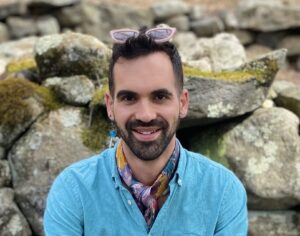
As communities around the world celebrate Pride this month, I think not so much about colorful parades or the latest Target merchandise as I do about the resilience of my queer neighbors around the world. LGBTQ+ people are a resilient group and each individual is unique in their dreams, challenges, experiences, and worldviews. Pride allows us to reflect on our joys, triumphs, and the obstacles we’ve overcome. It also reminds us how much work we must do to make the world safe so that all queer people can thrive.
I became interested in public health through my experience with two pandemics: working as a professional responding to COVID-19 and simultaneously learning about the HIV/AIDS pandemic as a graduate student. During the early HIV/AIDS crisis in the US, queer people, and particularly queer people of color, faced significant health disparities and stigmas associated with the virus. Not only did an HIV diagnosis mean a likely death sentence in the 1980s and early 90s, but it often caused a domino effect of collapsed support systems. Queer people who were closeted found themselves forced to share their true selves with their parents, families, employers, and communities; many lost family ties, jobs, income, and access to care. Still, queer communities were resilient. They cared for the sick and dying, and became their own health activists, forming grassroots organizations like ACT UP and the Treatment Action Group, pressuring institutions like the FDA and NIH to expedite research and identify lifesaving drugs.
Today, queer people still face significant health disparities; according to the Mental Health Foundation, mental health challenges like depression and anxiety are more common among LGBTQ+ people compared with the general population. The Trevor Project estimates that young queer people are four times more likely to attempt suicide than their cis-het peers. Queer people face barriers to accessing culturally knowledgeable healthcare and many states have enacted laws that prohibit queer youth and adults from receiving best-practice care (Movement Advancement Project).
I know from personal experience how humiliating it feels to be in a room with a health professional who does not know how to answer questions specific to my lived experience and identity. I also know how affirming it is to be seen by a provider who can address my specific needs and challenges. I want to work toward a future where all queer people, and young queer people in particular, have access to information and care that affirms their identifies, lived experiences, and dignity. This month, as we celebrate Pride, I’m dedicated to activating queer youth as health leaders in their communities to make the world safe for us all.
The late bell hooks describes being queer as “being about the self that is at odds with everything around it and that has to invent and create and find a place to speak and to thrive and to live”. This month, I recognize the resilience of LGBTQ+ people in the past, present, and future. We find ourselves often at odds with the world around us, but still cultivate fertile ground to love, innovate, transform, and thrive. To me, this resilience is the essence of Pride.
-Chad Seamon, FACES Program Manager